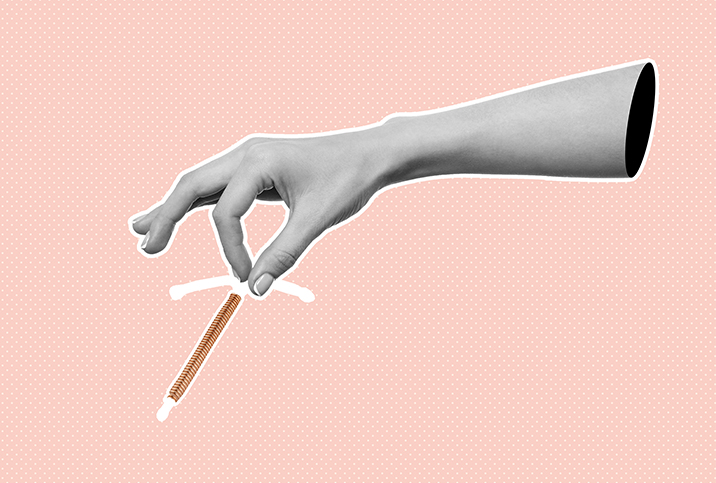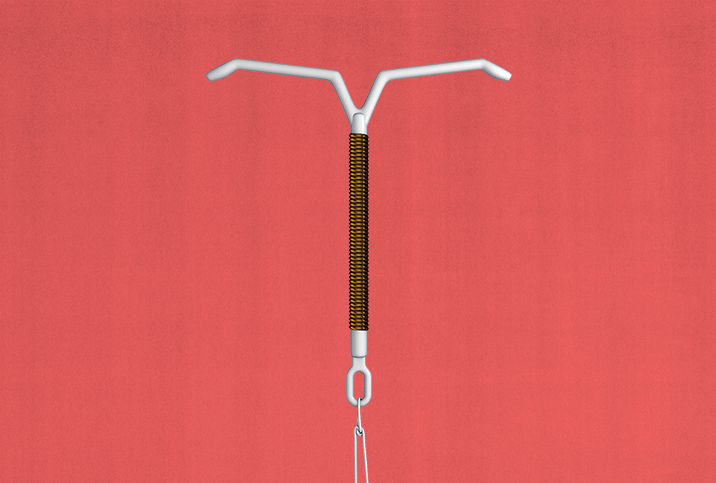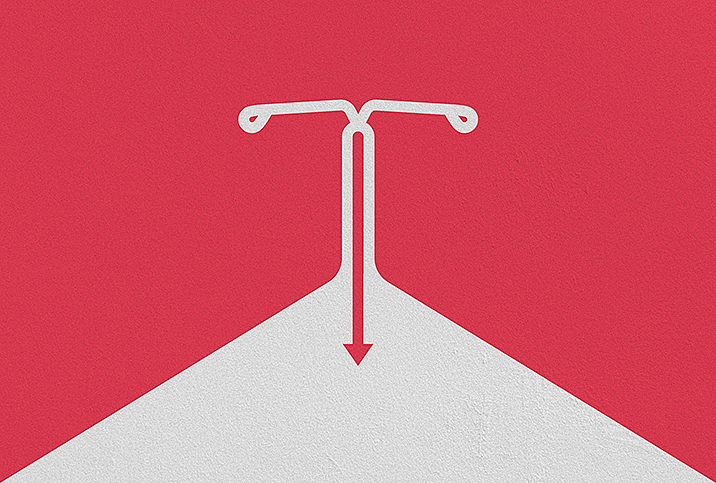What Are The Warning Signs of a Dislodged IUD?

An intrauterine device, known as a coil or IUD, is a birth control device that rests in the uterus. The device makes the womb uninhabitable for sperm by using low levels of progestin or copper, minimizing the risk of pregnancy.
IUDs have been shown to be safe, reliable and highly effective. However, in rare cases, IUDs can become dislodged or "expelled" from the uterus. For some people, this IUD expulsion leads to the device falling out of the body. For others, the IUD may move around the uterus or even become lodged in the womb lining.
Expulsion can lead to unwanted pregnancies and, in rare cases, prove dangerous.
What is IUD expulsion?
IUD expulsion occurs when the device becomes displaced from the uterus.
"An IUD is a tiny device inserted in the uterus to prevent pregnancy," said Katerina Shkodzik, M.D., a certified OB-GYN in Belarus and a medical advisor for Mira, a fertility tracking app. "It can act as a regular birth control method or also as an emergency contraception if it is inserted in the uterus during 120 hours after unprotected sex. Copper IUDs contain a copper part; the ions of copper from this part have the disruptive effect on sperm that prevent the egg from being fertilized by a sperm. Hormonal IUDs prevent pregnancy by thickening of the cervical mucus and thinning the uterine lining."
How do IUDs work?
Usually, both copper and hormonal IUDs rest in the uterus for several years (depending on the brand) without problems. However, in some cases, the IUD moves around or even falls out of the uterus.
"Expulsion occurs when the IUD partially or completely slips out of placement," explained Kris Adair, M.S.N., a family nurse practitioner in Phoenix. "This sometimes occurs in women who have never had children or teenagers that receive IUD placement or during a menstrual cycle as the cervix slightly dilates and can release the IUD.
"If expulsion occurs, it's important to use a backup contraceptive until you are able to follow up with your provider for additional contraceptive counseling," Adair added.
What are common symptoms of expulsion?
It isn't always easy to tell if your IUD has fallen out or moved out of place. In fact, many women never notice. If you're worried your IUD has been expelled, here are a few signs to look out for:
- Your IUD string has changed. "If you feel that your IUD string is longer than usual, it may be a sign that the device is being expelled," said Gil Weiss, M.D., an OB-GYN in Chicago. You might also notice that your IUD string is shorter or seems to have disappeared. It's good practice to check your IUD strings every few weeks to make sure the device hasn't moved around in the uterus.
- Abdominal pain. If you notice cramping and discomfort in the vagina, this may be a sign that your IUD has become displaced, Shkodzik said.
- Irregular bleeding. Irregular bleeding, spotting or discharge is another sign that your IUD has moved around, Shkodzik said.
- Your partner can feel your IUD. If your IUD has started to move down toward the vagina, your partner may feel your IUD during sex, which can be a sign of expulsion.
What to do if you have a problem with your IUD
It isn't always easy to tell if your IUD has displaced, dislodged or fallen out altogether. If you are concerned your IUD may have been expelled, it's important to schedule an appointment and tell your doctor, who will be able to determine if there is a problem with your IUD. In the meantime, be sure to use an alternative method of contraception just in case.
Here are some additional details about IUD expulsion:
What is partial expulsion?
IUD expulsion typically refers to an IUD falling out of the body entirely. However, an IUD can also become partially expelled, which occurs when the device becomes displaced within the uterus. Partial expulsion can be dangerous because the device can become lodged in the lining of the uterus or migrate to the abdominal cavity. This is known as IUD perforation and can be dangerous. It usually requires surgical removal of your IUD.
How common is expulsion?
Expulsion is relatively rare. According to a 2020 study, IUD expulsion occurs in roughly 10 percent of cases. Perforation is much more rare, occurring in only 0.1 percent of cases.
Why does expulsion occur?
The cause of IUD expulsion is unknown, however, most experts agree it is probably related to the body trying to reject what it perceives as a foreign object.
What are expulsion risk factors?
Some women, it seems, are more likely to experience IUD expulsion than others. Women who have never given birth are more likely to expel their IUD. It is also more common among women who have heavier periods prior to IUD insertion.
What happens next?
If your IUD is expelled or partially expelled, you are no longer protected against pregnancy, so you need an alternative form of birth control until a new IUD is inserted.
In most cases, expulsion isn't harmful to the body. However, it's important to keep an eye out for it to avoid accidental pregnancy. Reach out to your doctor if you have any worries about IUD expulsion.
If you don't have a regular physician, now is the time to find one. Giddy telehealth takes the difficulty out of such a search, providing access to hundreds of healthcare professionals who offer video visits as a regular part of their practices. It is an easy-to-use online portal whose physicians, therapists and others have expertise across the full scope of medical care. Many have same-day appointments.


















